Importance of Road Signs
- Ensuring Safety: Alerting drivers to potential hazards, speed limits, and regulatory requirements.
- Providing Direction: Guiding drivers to their destinations through clear directional signs.
- Regulating Traffic: Managing the flow of vehicles and pedestrians at intersections, roundabouts, and other key points.
Categories Of Road Signs In Kenya

Have you ever noticed that road signs come in different shapes and symbols? It can be confusing, right? But don’t worry, they’re actually pretty simple once you understand them.
In Kenya, road signs are divided into 4 categories. Each category has its own set of signs with specific meanings. These signs are designed to be easy to recognize while driving. So, what are these four categories and what do they mean? Let’s break it down:
- Class A – Regulatory signs.
- Class B – Warning Signs.
- Class C – Traffic light signals.
- Class D – Carriageway markings and Kerb Markings.
Note: Signs on the road are there to keep everyone safe. That’s the main reason they exist. So, everyone needs to understand what they mean.
Class A – Regulatory Signs
Regulatory signs are designed to inform drivers about laws and regulations that must be obeyed.
In Kenya, common regulatory signs include:
-
Stop Sign: A red octagonal sign that requires drivers to come to a complete stop and yield the right-of-way before proceeding.
-
Give Way Sign: A triangular sign indicating that drivers must yield the right-of-way to vehicles on the intersecting road.
-
No Entry Sign: Prohibits entry into a specific area or road, typically used for one-way streets or restricted zones.
-
One Way Sign: Indicates that traffic is allowed to move in only one direction on the specified road.
-
Speed Limit Sign: Indicates the maximum speed allowed on a particular road or section of road.
-
No Overtaking Sign: Prohibits overtaking other vehicles on the road, often used in areas with limited visibility or narrow lanes.
-
No U-Turn Sign: Prohibits making a U-turn on the road, typically found at intersections or areas with restricted turning movements.
-
No Parking Sign: Indicates areas where parking is prohibited, ensuring clear pathways for traffic and emergency vehicles.
-
No Stopping Sign: Prohibits vehicles from stopping along the designated area.
-
No Stopping Except Buses Sign: Permits stopping only for buses at designated areas.
-
No Stopping Except Taxis Sign: Permits stopping only for taxis at designated areas.
-
No Stopping Except Emergency Vehicles Sign: Permits stopping only for emergency vehicles at designated areas.
-
No Left Turn Sign: Prohibits left turns at an intersection or specific location.
-
No Right Turn Sign: Prohibits right turns at an intersection or specific location.
-
No Straight Through Sign: Prohibits continuing straight through an intersection or specific lane.
-
No Trucks Sign: Prohibits trucks from entering a certain area or road.
-
No Bicycles Sign: Prohibits bicycles from entering a certain area or road.
-
No Pedestrians Sign: Prohibits pedestrians from entering a certain area or road.
-
Keep Left Sign: Instruct drivers to keep to the left side of the road.
-
Keep Right Sign: Instruct drivers to keep to the right side of the road.
-
No Horn Sign: Indicates areas where the use of horns is prohibited, typically near hospitals, schools, or residential areas.
Class B – Warning Signs
Warning signs alert drivers to potential hazards or changes in road conditions ahead.
Key warning signs in Kenya include:
-
Pedestrian Crossing Sign: Indicates a designated area for pedestrians to cross the road.
-
School Zone Sign: Indicates a school zone where drivers should exercise caution due to the presence of children.
-
Animal Crossing Sign: Warns of potential animal crossings, requiring drivers to be cautious.
-
Sharp Curve Sign: Warns drivers of a sharp curve ahead.
-
Slippery Road Sign: Alerts drivers to slippery road conditions, often due to rain, ice, or oil spills.
-
Road Narrows Sign: Indicates that the road ahead narrows, requiring caution and possible lane merging.
-
Road Hump Sign: Indicates the presence of a speed bump or road hump ahead.
-
Low Bridge Sign: Warns drivers of a low bridge ahead, indicating a height restriction for vehicles.
-
Railway Crossing Sign: Warns of a railway crossing ahead, requiring drivers to be cautious and watch for trains.
-
Traffic Lights Ahead Sign: Indicates the presence of traffic lights ahead, prompting drivers to prepare for controlled intersections.
-
Crossroads Sign: Indicates the presence of a crossroads ahead, where multiple roads intersect.
-
T-Junction Sign: Indicates a T-junction ahead, where one road ends, and another road intersects it.
-
Roundabout Sign: Indicates the presence of a roundabout ahead, requiring drivers to yield and navigate the roundabout.
-
Diversion Sign: Indicates a temporary diversion or detour from the usual route.
-
Falling Rocks Sign: Warns drivers of potential falling rocks or landslides in the area.
-
Flooded Road Sign: Warns drivers of a flooded or waterlogged road ahead, requiring caution and possible alternate routes.
-
Pedestrian Crossing Ahead Sign: Indicates an upcoming pedestrian crossing, prompting drivers to watch for pedestrians.
-
Bicycle Crossing Sign: Indicates an area where bicycles may cross the road, requiring drivers to be cautious.
-
Children Crossing Sign: Warns of children crossing the road ahead, requiring extra caution and reduced speed.
Class C – Traffic Lights
Traffic lights have different signals that tell drivers what to do at intersections. These signals are red, green, and amber. Drivers must follow these lights to keep traffic moving smoothly and avoid accidents.
Here is a list of common traffic lights used in Kenya:
-
Red Light: Indicates that drivers must stop. It is usually displayed at intersections and pedestrian crossings.
-
Green Light: Indicates that drivers can proceed, but they must yield to pedestrians and vehicles with the right-of-way.
-
Yellow Light: Generally indicates that the light is about to change from green to red. It serves as a warning for drivers to prepare to stop.
-
Flashing Red Light: Often used at railway crossings, this light indicates that drivers must stop, check for trains, and proceed only when it’s safe to do so.
-
Flashing Green Light: Indicates that a pedestrian-controlled traffic signal is in operation, allowing pedestrians to cross.
-
Pedestrian Crossing Light: Consists of a green walking person (for pedestrians to cross) and a red hand (for pedestrians to stop).
-
Arrow Lights: Used in combination with red or green lights to indicate specific turning permissions. For example:
- Green Arrow: Allows vehicles to turn in the direction of the arrow.
- Red Arrow: Prohibits turning in the direction of the arrow.
Note: It’s important to follow these rules to stay safe on the road and prevent accidents. Sometimes, you might see other lights with arrows that help direct traffic. For example, a green arrow pointing left means you can turn left even if the other lights are red. But if the arrow is red, you have to stop before turning left.
Class D – Carriageway And Kerb Markings
Road signs in Kenya are often painted on roads and kerbs in yellow or white. You might have seen lines on highways that split lanes for traffic going in different directions.
Here is a list of common carriageway and kerb markings used in Kenya:
-
Centre Line Marking: A solid white line that separates traffic moving in opposite directions. It may be single or double, indicating no overtaking if double.
-
Lane Markings: Solid white lines that define individual lanes of traffic. They help guide drivers and maintain lane discipline.
-
Edge Line Marking: A solid white line along the edge of the road, indicating the boundary between the carriageway and the shoulder or verge.
-
Stop Line: A solid white line across the road at intersections, indicating where vehicles must stop when facing a red traffic light or stop sign.
-
Give Way Line: A solid white line at intersections or junctions, indicating where vehicles must yield the right-of-way.
-
Pedestrian Crossing Markings: Zebra crossings with white stripes painted across the road, indicating designated pedestrian crossing areas.
-
Arrows: Directional arrows painted on the road surface to indicate permitted or required directions of travel.
-
Box Junction Markings: Yellow crisscross lines painted on the road surface at intersections, indicating areas where drivers must not enter unless their exit is clear.
-
Lane Delineators: Reflective posts or markings on the road surface that help define lane boundaries, especially at night or in low visibility conditions.
-
Chevron Markings: White arrows or chevrons painted on the road surface, indicating sharp bends or curves ahead.
-
Kerb Markings: Yellow lines painted on the kerb or edge of the road to indicate no parking zones, loading zones, or other restrictions.
-
Crosswalk Markings: White stripes painted across the road at pedestrian crossings, often accompanied by pedestrian signs and lights.
-
Bus Lane Markings: Markings indicating lanes reserved for buses, usually painted with a different color or pattern from regular lanes.
-
Cycle Lane Markings: Markings indicating lanes reserved for cyclists, often painted with symbols and/or colored lanes.
Other Road Signs To Look Out For
Informational Signs
Informational signs provide drivers with useful information about the road, directions, or nearby facilities.
These include:
-
Road Work Ahead Sign: Warns drivers of road construction or maintenance work ahead, prompting them to slow down and proceed with caution.
-
Detour Sign: Indicates a temporary detour or alternate route due to road closures or construction.
-
Diversion Sign: Similar to a detour sign, it directs drivers to take a different route to reach their destination.
-
End of Speed Limit Sign: Indicates the end of a speed limit zone, returning to the regular speed limit for that road.
-
End of No Overtaking Zone Sign: Marks the end of a section where overtaking is prohibited, allowing overtaking to resume if safe and legal.
-
End of No Parking Zone Sign: Indicates the end of a designated no parking area, allowing parking to resume if permitted.
-
End of No Stopping Zone Sign: Marks the end of a designated no stopping area, allowing stopping if necessary and lawful.
-
Road Closed Sign: Informs drivers that the road ahead is closed and not accessible, requiring them to find an alternative route.
-
Bridge Height Sign: Indicates the height clearance of a bridge, warning drivers of vehicles taller than the clearance to take a different route.
-
Weight Limit Sign: Indicates the maximum weight limit allowed on a bridge or road section, informing drivers of restrictions for heavy vehicles.
-
No Through Road Sign: Informs drivers that the road ahead does not continue through to the desired destination, prompting them to turn back or take a different route.
-
No Entry Except for Residents Sign: Restricts entry into a specific area unless the driver is a resident or has authorized access.
-
No Entry Except for Emergency Vehicles Sign: Prohibits entry into a designated area unless the vehicle is an emergency vehicle.
-
No Entry for Vehicles Sign: Indicates areas where vehicles are not permitted to enter, such as pedestrian-only zones.
-
Road Closed to Through Traffic Sign: Informs drivers that the road is closed to through traffic, allowing local access only.
-
Service Station Sign: Indicates the presence of a service station or rest area ahead, providing amenities such as fuel, food, and restrooms.
-
Hospital Sign: Directs drivers to the location of a hospital or medical facility.
-
Hotel/Motel Sign: Indicates the location of a hotel or motel for travelers seeking accommodation.
-
Airport Sign: Directs drivers to the location of an airport or aerodrome.
-
Tourist Information Sign: Provides information about nearby tourist attractions, scenic routes, or points of interest.
Directional Signs
Directional signs help drivers navigate their way by providing directions to specific destinations.
These include:
-
Route Marker Signs: These signs indicate the route number or name for a specific road or highway, helping drivers navigate and stay on the correct route.
-
Destination Signs: Provide directions and distances to various destinations, including cities, towns, landmarks, and facilities such as airports or hospitals.
-
Exit Signs: Indicate upcoming exits on highways or major roads, directing drivers to exit ramps leading to specific destinations or areas.
-
Interchange Signs: Identify interchanges where roads or highways intersect, providing information about available exits, directions, and destinations.
-
Roundabout Signs: Guide drivers approaching roundabouts, indicating the correct lanes and exits to take based on their desired direction of travel.
-
Advance Direction Signs: Located in advance of intersections or junctions, these signs provide early guidance on upcoming turns, lane changes, or route options.
-
Lane Usage Signs: Direct drivers on multi-lane roads or highways, indicating which lanes are for through traffic, turning, merging, or specific vehicle types.
-
Arrow Boards: Temporary directional signs used in construction zones or roadwork areas, providing guidance on lane shifts, detours, and temporary routes.
-
Information Panels: Supplemental signs that provide additional information about routes, exits, services, or special conditions ahead.
-
Mileage Signs: Display distances to various destinations or landmarks, helping drivers estimate travel time and plan their routes.
-
Guide Signs: Comprehensive signs that combine route markers, destination information, exit directions, and other navigational details to assist drivers in reaching their destinations.
Construction Signs
Construction signs are temporary signs placed in construction zones to alert drivers to potential hazards and provide guidance. These include:
-
Road Work Ahead Sign: Warns drivers of road construction or maintenance work ahead, prompting them to slow down and proceed with caution.
-
Detour Sign: Indicates a temporary detour or alternate route due to road closures or construction.
-
Diversion Sign: Similar to a detour sign, it directs drivers to take a different route to reach their destination.
-
End of Road Works Sign: Indicates the end of a section under construction, returning to normal road conditions.
-
Men at Work Sign: Alerts drivers to the presence of construction workers on or near the roadway, prompting them to reduce speed and exercise caution.
-
Construction Zone Sign: Marks the beginning of a designated construction zone, informing drivers to be aware of changing road conditions and potential hazards.
-
Construction Equipment Sign: Warns of construction equipment or vehicles operating in the area, reminding drivers to be vigilant and maintain safe distances.
-
Construction Speed Limit Sign: Indicates a reduced speed limit within a construction zone, ensuring the safety of workers and drivers.
-
Construction Lane Closure Sign: Informs drivers of lane closures or restrictions due to ongoing construction, prompting them to merge or change lanes accordingly.
-
Flagger Ahead Sign: Indicates the presence of a flagger or traffic controller ahead, directing traffic in construction zones.
-
Temporary Traffic Control Signs: Include various signs such as “Road Closed,” “Lane Closed,” “No Through Traffic,” and “Detour Ahead,” providing specific instructions and warnings to drivers.
-
Work Zone Ahead Sign: Alerts drivers to upcoming work zones, where they should expect delays, lane closures, and construction activities.
-
Construction Warning Signs: Provide warnings about specific hazards within construction zones, such as uneven road surfaces, loose gravel, or temporary traffic patterns.
-
Pedestrians in Work Area Sign: Alerts drivers to the presence of pedestrians, construction workers, or equipment near the roadway.
Understanding Road Signs
-
Colors: Road signs in Kenya use standardized colors for easy recognition. Red indicates prohibitions or mandatory actions, yellow warns of hazards, blue provides information, green indicates directions or guidance, and white indicates regulatory or informational messages.
-
Symbols and Icons: Road signs often use symbols, icons, and pictograms to convey messages quickly and universally. For example, a red octagon with “STOP” in white indicates a stop sign, while a white arrow on a blue background indicates direction.
-
Location and Placement: Road signs are strategically placed along roads and intersections to ensure visibility and comprehension by drivers. They are typically positioned in advance of the situation they address to give drivers sufficient time to react.
FAQs About Road Signs in Kenya
How can I differentiate between the colors of road signs in Kenya?
In Kenya, road signs follow standardized colors for easy recognition:
- Red: Prohibitions or mandatory actions
- Yellow: Warnings of hazards
- Blue: Information and services
- Green: Directions or guidance
- White: Regulatory or informational messages
What do regulatory signs indicate on Kenyan roads?
Regulatory signs in Kenya enforce traffic laws and regulations. They include signs such as speed limits, no entry, no parking, no overtaking, and lane usage instructions.
What are warning signs, and why are they important?
Warning signs in Kenya alert drivers to potential hazards ahead, such as sharp curves, slippery roads, pedestrian crossings, and animal crossings. They are crucial for promoting safety and reducing accidents on the roads.
How do informational signs benefit drivers on Kenyan roads?
Informational signs provide drivers with essential information about routes, destinations, services, and special conditions. They help drivers make informed decisions and navigate efficiently.
What role do directional signs play in guiding drivers?
Directional signs in Kenya guide drivers by indicating routes, destinations, exits, interchanges, and roundabouts. They assist drivers in navigating unfamiliar areas and choosing appropriate routes.
Why are construction signs important for drivers?
Construction signs inform drivers about ongoing road work, detours, lane closures, and construction-related hazards. They enhance safety and awareness in construction zones.
What are the consequences of ignoring road signs in Kenya?
Ignoring road signs in Kenya can lead to traffic violations, fines, penalties, and increased risks of accidents. Drivers need to respect and follow road sign instructions for their safety and the safety of others.
Where can I find more detailed information about specific road signs in Kenya?
For detailed information about specific road signs in Kenya, including meanings, symbols, and regulations, refer to official road safety resources, such as the Kenya Roads Authority (KENHA) website or local traffic authorities.
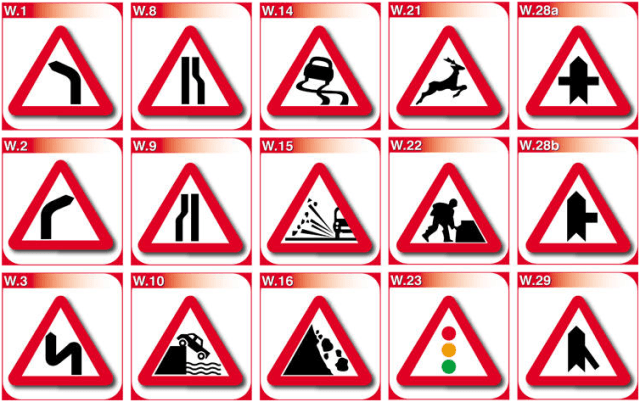
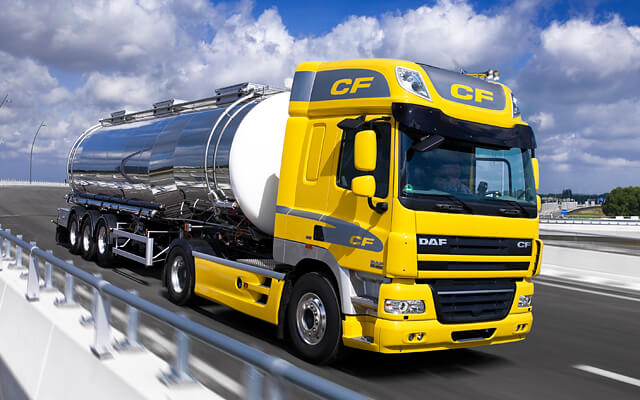
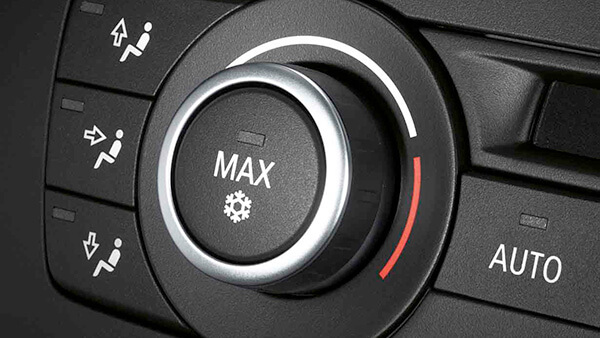
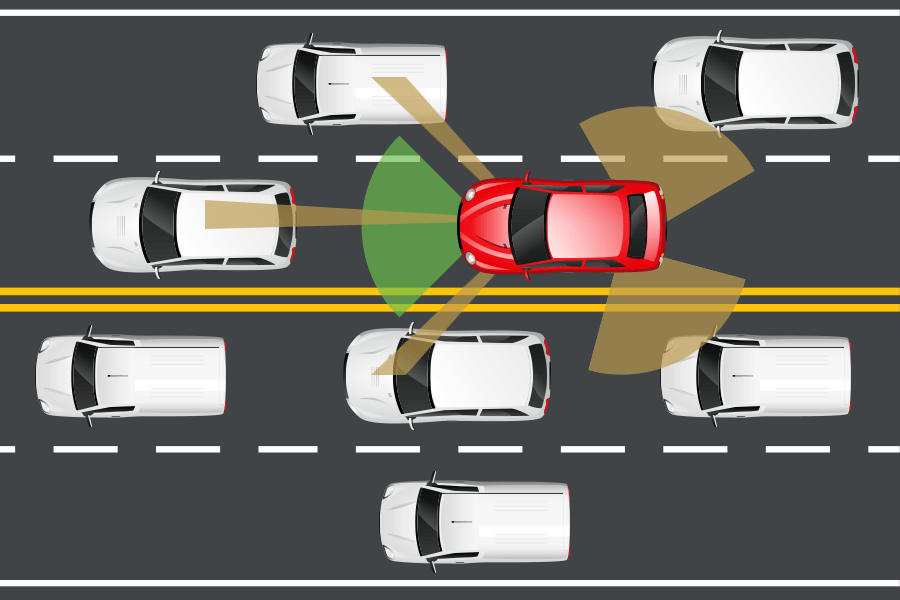
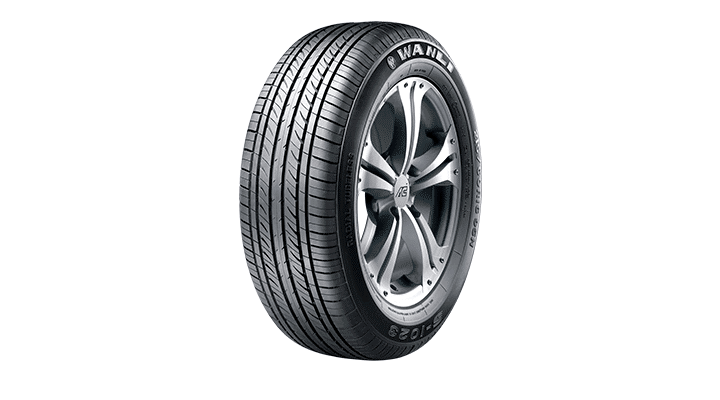
The blue signs are mandatory
This is quiet good.
However it would be helpful for revision if you put explanations/description of each sign as you have done for class A.